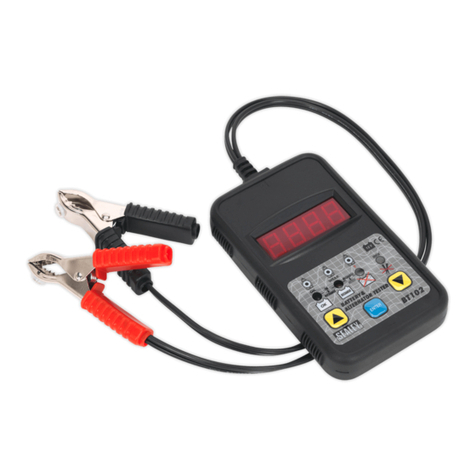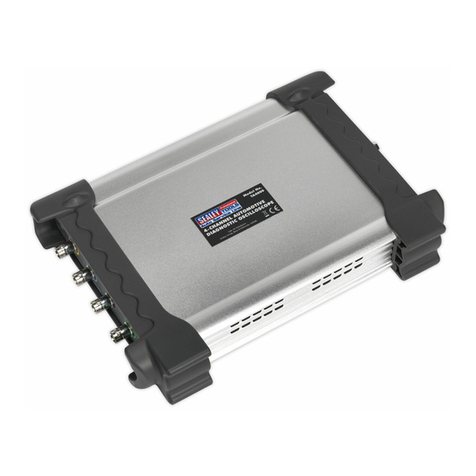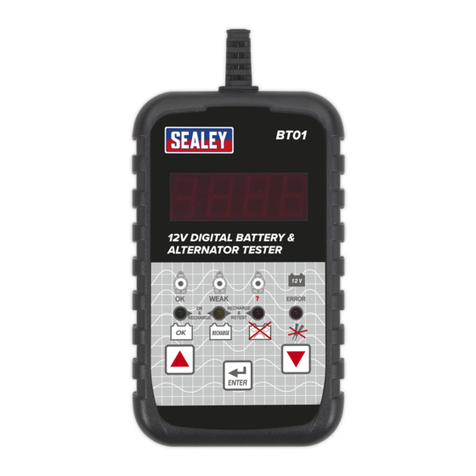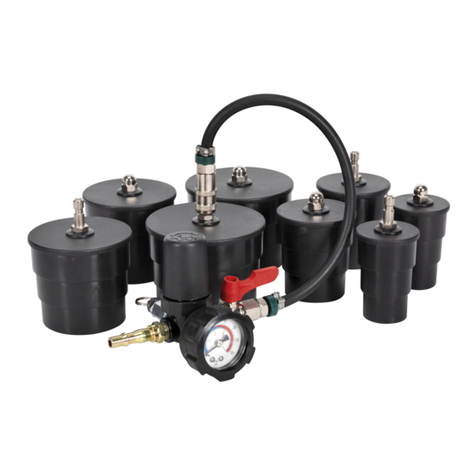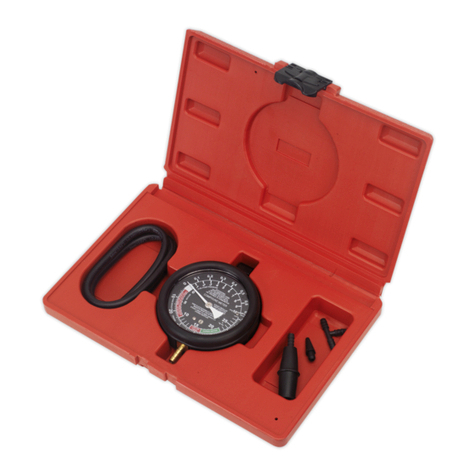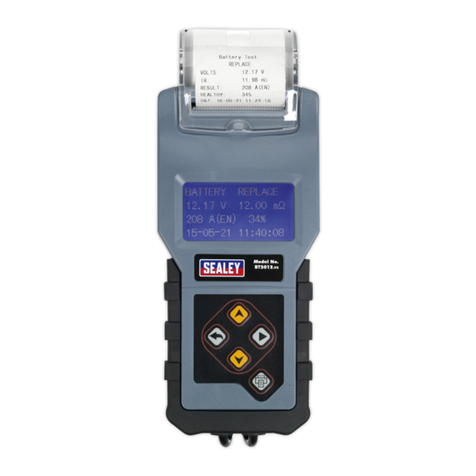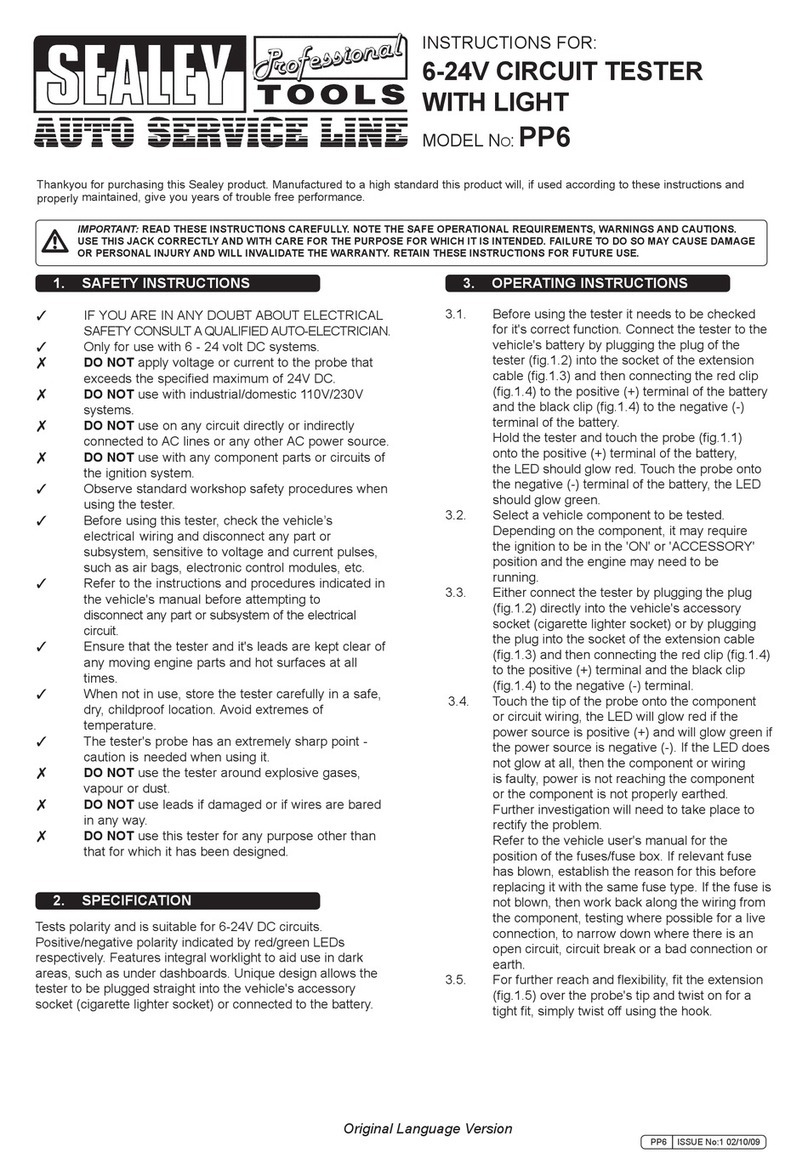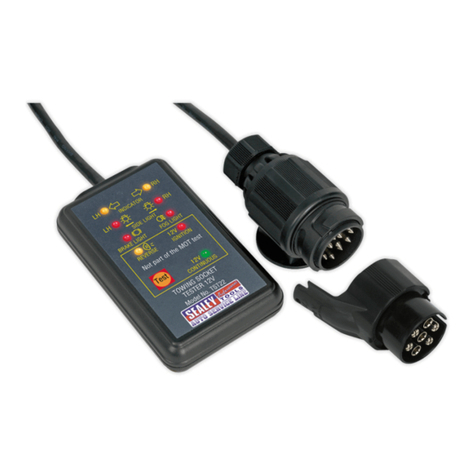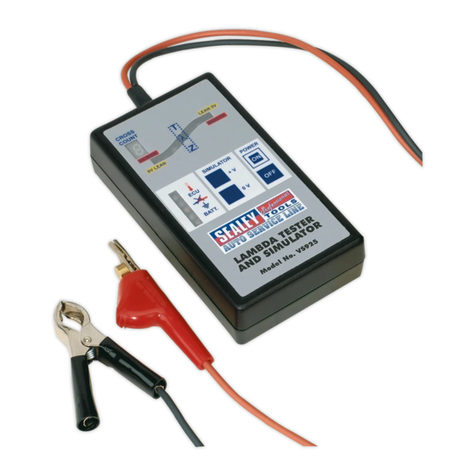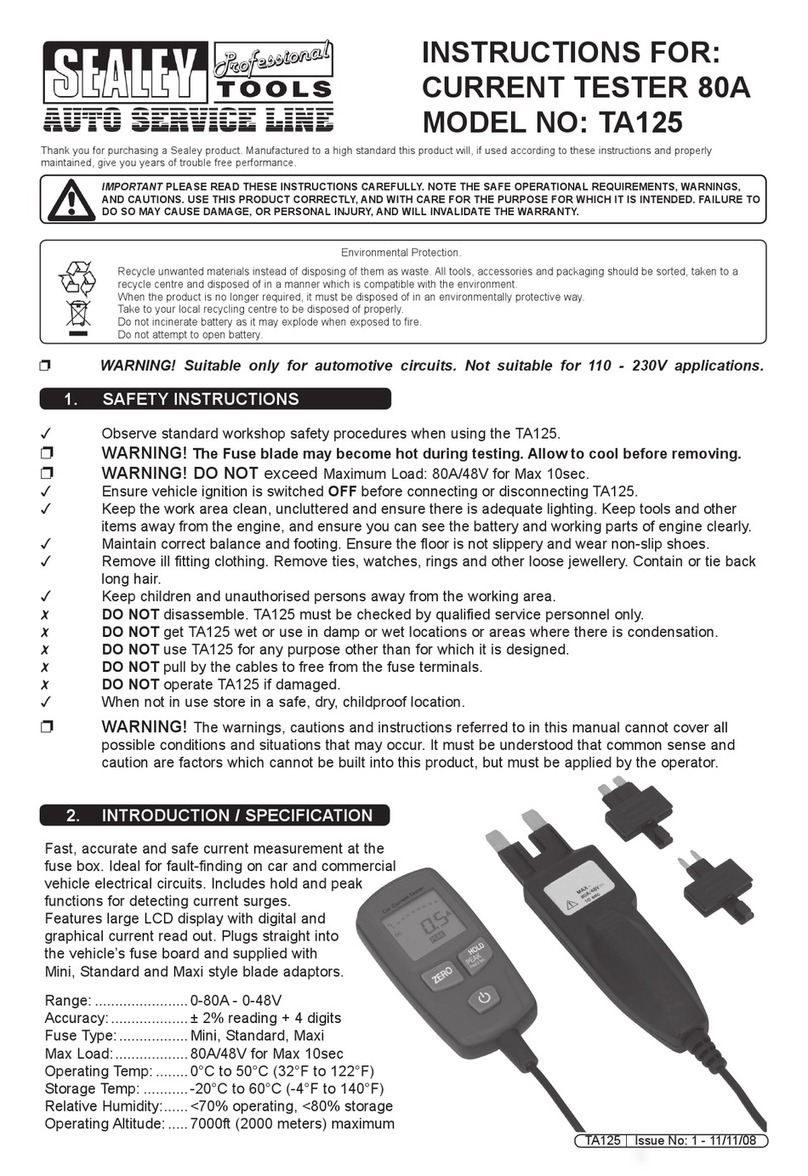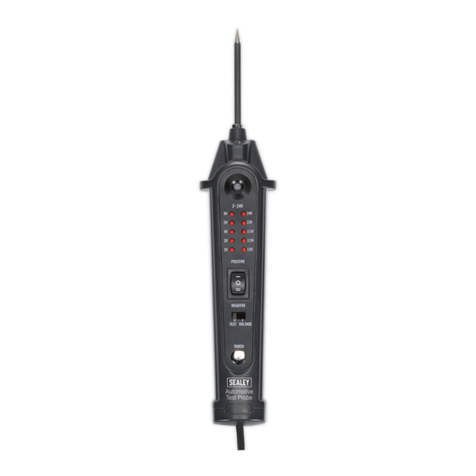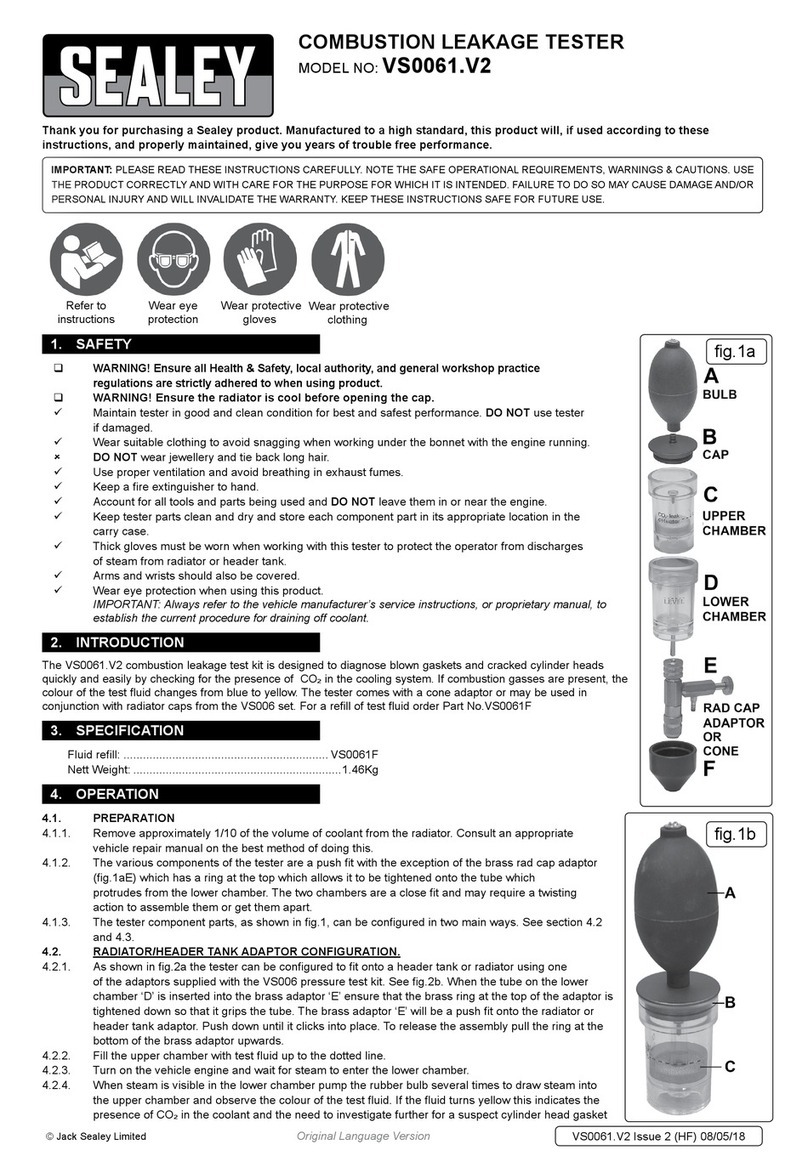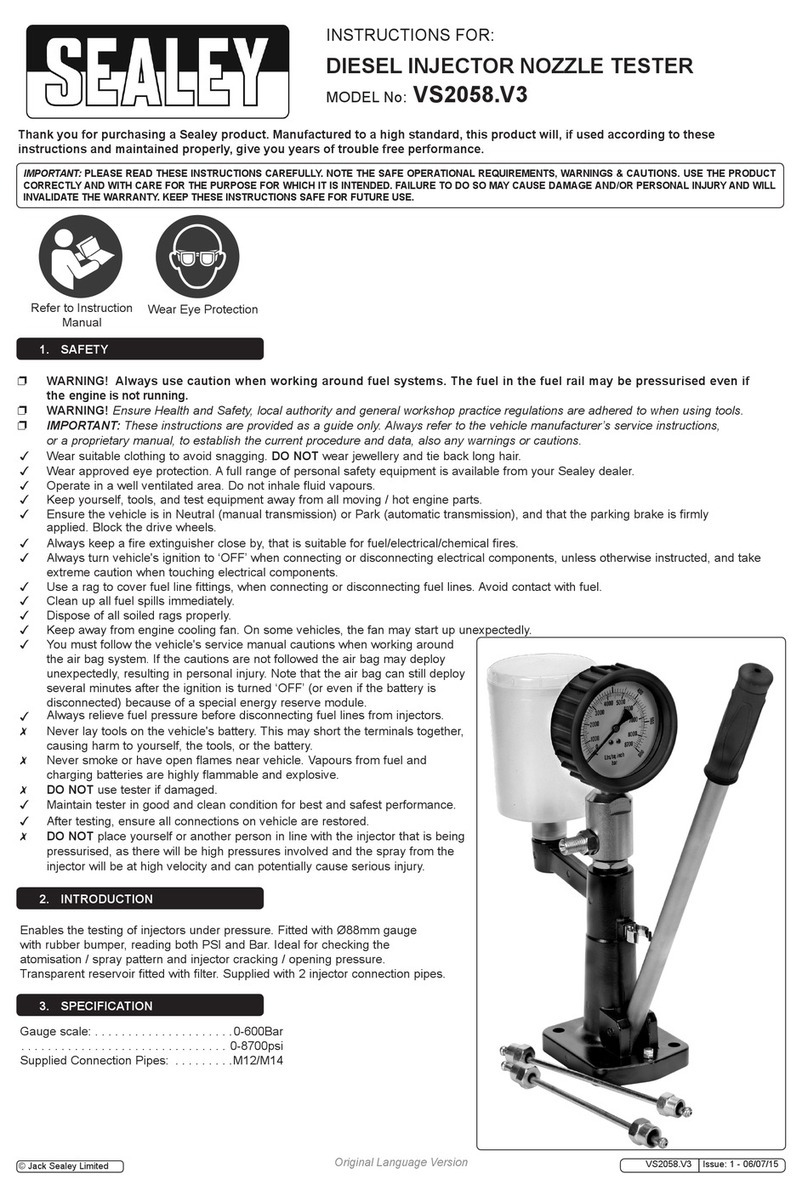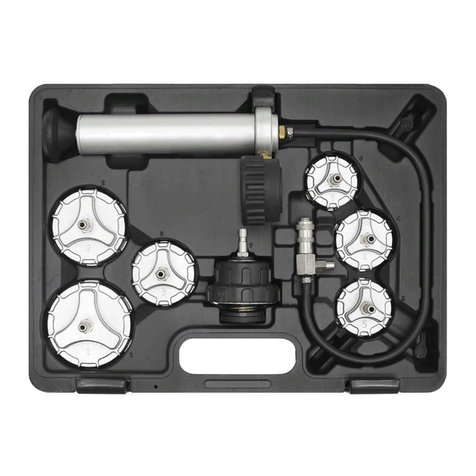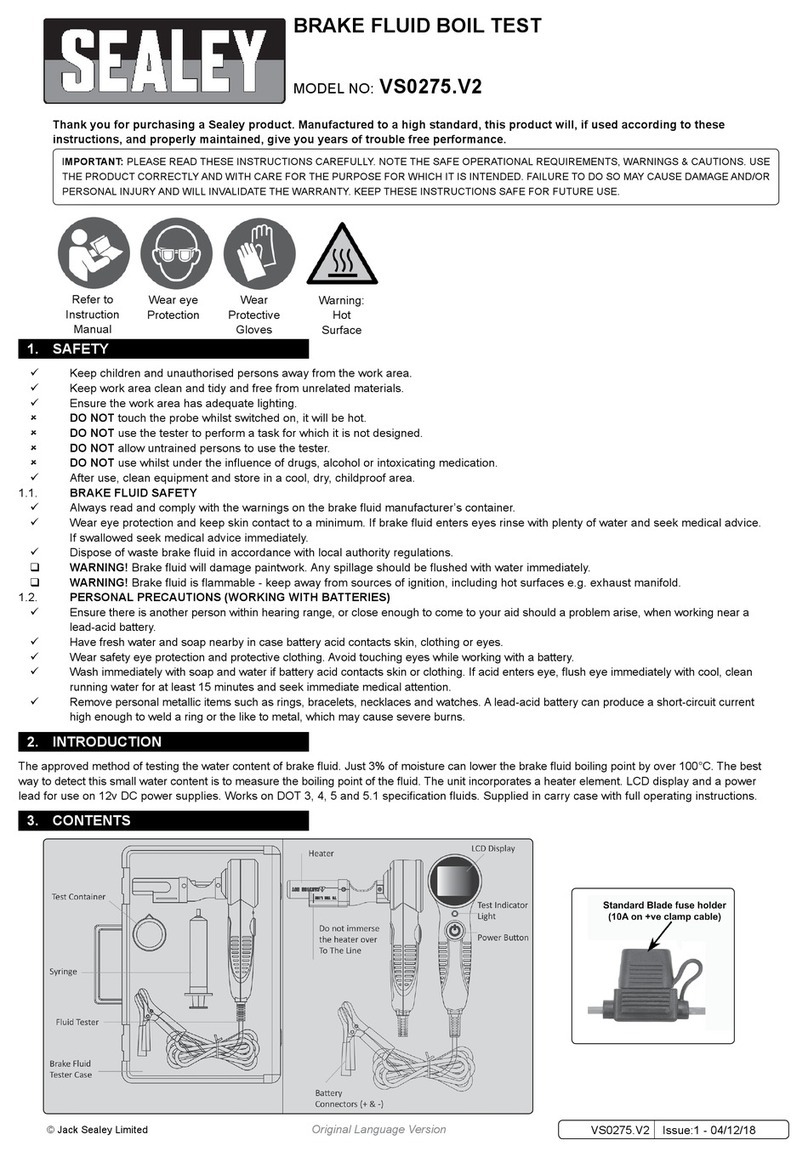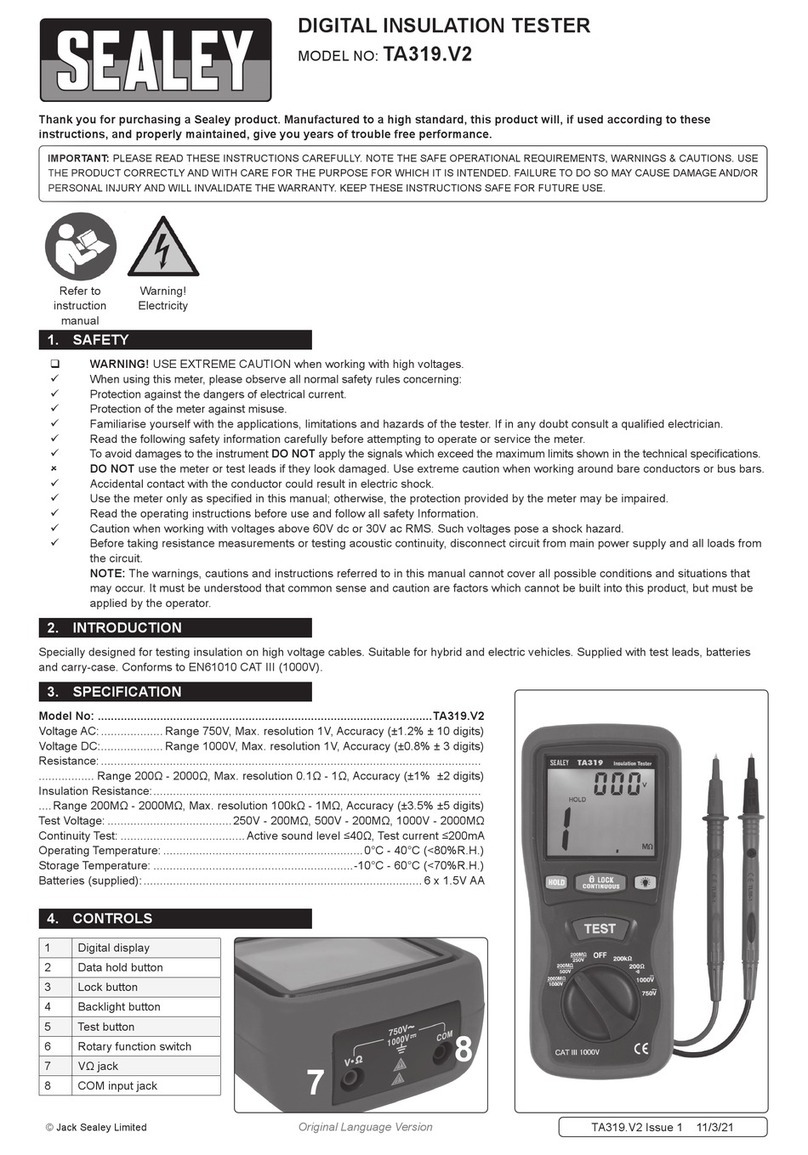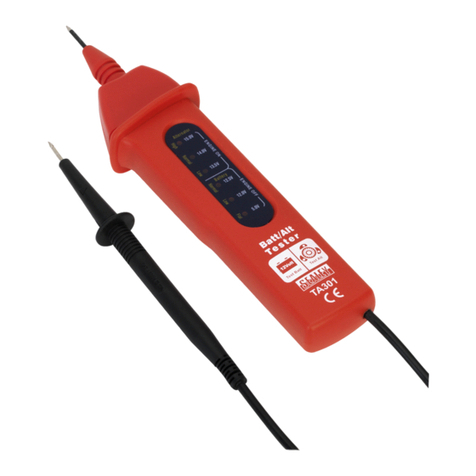
Thank you for purchasing a Sealey product. Manufactured to a high standard, this product will, if used according to these instructions,
and properly maintained, give you years of trouble free performance.
IMPORTANT: PLEASE READ THESE INSTRUCTIONS CAREFULLY. NOTE THE SAFE OPERATIONAL REQUIREMENTS, WARNINGS & CAUTIONS. USE
THE PRODUCT CORRECTLY AND WITH CARE FOR THE PURPOSE FOR WHICH IT IS INTENDED. FAILURE TO DO SO MAY CAUSE DAMAGE AND/OR
PERSONAL INJURY AND WILL INVALIDATE THE WARRANTY. KEEP THESE INSTRUCTIONS SAFE FOR FUTURE USE.
1. SAFETY
▲DANGER! BE AWARE, LEAD-ACID BATTERIES GENERATE EXPLOSIVE GASES DURING NORMAL BATTERY OPERATION. FOR THIS
REASON, IT IS VERY IMPORTANT TO READ AND FOLLOW THESE INSTRUCTIONS CAREFULLY, EACH TIME YOU USE THE
BATTERY TESTER.
Follow these instructions and those published by the battery and vehicle manufacturers, and the maker of any equipment you intend
to use in the vicinity of the battery. Remember to review warning marks on all products and on engines.
1.1. PERSONAL PRECAUTIONS
9Ensure that there is another person within hearing range and close enough to come to your aid, should a problem arise when working
near a lead-acid battery.
9Wear safety eye protection and protective clothing. Avoid touching eyes while working near battery.
9Have fresh water and soap nearby in case battery acid contacts skin, clothing, or eyes.
9Wash immediately with soap and water if battery acid contacts skin or clothing. If acid enters eye, flush eye immediately with cool, clean
running water for at least 15 minutes and seek immediate medical attention.
9Remove personal metallic items such as rings, bracelets, necklaces and watches. A lead-acid battery can produce a short-circuit current
which is high enough to weld such items to the vehicle and cause severe burns.
9Ensure that hands, clothing (especially belts) are clear of fan blades and other moving or hot parts of engine. Remove ties and contain
long hair.
8DO NOT smoke or allow a spark or flame in the vicinity of the battery or engine.
1.2. GENERAL SAFETY
9Familiarise yourself with the application, limitations and potential hazards of the tester. Also refer to the vehicle manufacturer’s hand
book. IF IN ANY DOUBT CONSULT A QUALIFIED VEHICLE ELECTRICIAN.
9Ensure that the tester is in good condition before use. If in any doubt do not use the unit and contact a qualified vehicle electrician.
9Only use recommended attachments and parts. To use unapproved items may be dangerous and will invalidate your warranty.
9Keep tools and other items away from the engine and ensure that you can see the battery and working parts of engine clearly.
9Determine the system voltage before using the tester.
9If the tester receives a sharp knock or blow the unit must be checked by a qualified service agent before using.
9If the battery terminals are corroded or dirty clean them before using the tester.
9Keep children and unauthorised persons away from the work area.
8DO NOT disassemble the tester for any reason. The tester must only be checked by qualified service personnel.
WARNING! To prevent the risk of sparking, short circuit and possible explosion DO NOT drop metal tools in the battery area, or allow
them to touch the battery terminals.
8DO NOT cross-connect tester to battery. Ensure positive (RED) clamp is to positive terminal and negative (BLACK) clamp is to negative
terminal. If battery symbols cannot be distinguished, remember that the negative terminal is the one directly connected to the vehicle
bodywork.
8DO NOT use the tester outdoors, or in damp, or wet locations and DO NOT use in the vicinity of flammable liquids or gases.
9Ensure there is effective ventilation to prevent a build-up of explosive gases.
8DO NOT use the tester for a task for which it is not designed.
9When not in use, store the tester carefully in a safe, dry, childproof location.
2. INTRODUCTION
Professional diagnosis of battery and alternator faults with the added facility to print the results. Test battery condition with as little as 1.5V of
residual charge. No heat, no sparks, no misdiagnosis. Checks condition of alternator, no complicated connections or interpretation required.
Analyse the charging system at rest and under load to determine condition of the alternator. Suitable for motorcycles, cars (including start/stop) and
commercial vehicles. Connect and follow the prompts on the 2-line/16 character LCD screen for straightforward answers. Rugged construction.
Supplied with batteries, two rolls of printing paper and instruction manual.
INSTRUCTIONS FOR
DIGITAL BATTERY & ALTERNATOR TESTER
WITH PRINTER
MODEL NO: BT2014
Refer to
instructions
Wear eye
protection
Wear
protective
clothing
Wear
protective
gloves
Warning:
explosive
material
Warning:
corrosive
substance
BT2014 | Issue:1 01/06/17
Original Language Version
© Jack Sealey Limited
